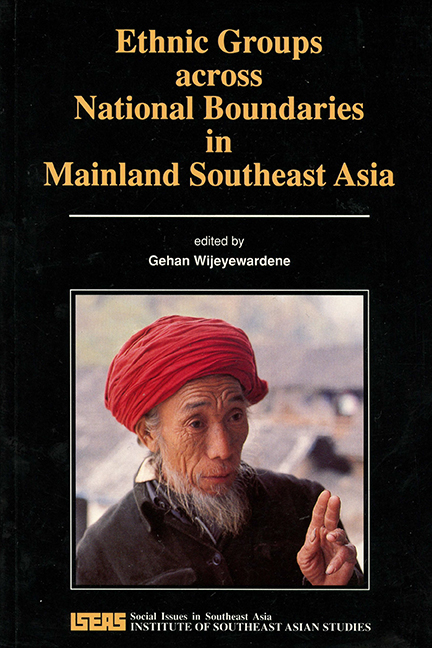Book contents
- Frontmatter
- Contents
- Foreword
- Contributors
- Acknowledgements
- 1 Introduction: Definition, Innovation, and History
- 2 Language and Ethnicity: The Mon in Burma and Thailand
- 3 Thailand and the Tai: Versions of Ethnic Identity
- 4 A Comparative Study of Structure and Contradiction in the Austro-Asiatic System of the Thai-Yunnan Periphery
- 5 Ethnicity, Nationalism, and the Nation-State: The Karen in Burma and Thailand
- 6 Capitalism and the Structure of Yao Descent Units in China and Thailand: A Comparison of Youling (1938) and Pulangka (1968)
- 7 Squatters or Refugees: Development and the Hmong
- 8 Afterword: “Ethnicity” and Anthropology
- Index
- THE EDITOR
Foreword
Published online by Cambridge University Press: 21 October 2015
- Frontmatter
- Contents
- Foreword
- Contributors
- Acknowledgements
- 1 Introduction: Definition, Innovation, and History
- 2 Language and Ethnicity: The Mon in Burma and Thailand
- 3 Thailand and the Tai: Versions of Ethnic Identity
- 4 A Comparative Study of Structure and Contradiction in the Austro-Asiatic System of the Thai-Yunnan Periphery
- 5 Ethnicity, Nationalism, and the Nation-State: The Karen in Burma and Thailand
- 6 Capitalism and the Structure of Yao Descent Units in China and Thailand: A Comparison of Youling (1938) and Pulangka (1968)
- 7 Squatters or Refugees: Development and the Hmong
- 8 Afterword: “Ethnicity” and Anthropology
- Index
- THE EDITOR
Summary
Ethnic and religious issues have, in the last few decades, confounded many social analysts by refusing to disappear. The “liberal expectancy” among social analysts used to be that modernization would blur ethnic distinctions, achievement would replace ascription and particularistic criteria, and wide-ranging communication and education systems would homogenize populations. The “radical expectancy” was that differences in religions, languages, and culture would be swallowed up, perhaps even across national boundaries by emergent class consciousness. Instead, religion and ethnicity continue to cut across and envelop almost every facet of Southeast Asian life. Indeed, if anything, such divisions in many societies have become sharper, ethnic and religious interest groups more insistent, and opposition more politicized and strident. Much of this activity seems to be increasingly played on the urban stage—and this at a time when the pace of urbanization in Southeast Asia is increasing rapidly, to the extent that by the turn of the century, cities such as Manila, Bangkok, and Jakarta could have populations of more than ten million each. In these settings, Southeast Asian ethnic, religious, and linguistic complexities are likely to be even more challenging than in the past.
It was therefore only natural that among other aspects of the Southeast Asian social and cultural scene, the Institute should identify the study of contemporary religion as one of its key areas of interest. Southeast Asia is after all not only home to all the major religions of the world — Islam, Buddhism, Christianity, and Hinduism — but the geographical spread of these is such that the bonds that bind their adherents at one and the same time defy and accentuate political and territorial divides and boundaries. The case of Islam is especially striking in this respect, as its followers are present in significant numbers in almost every Southeast Asian country, and in several of these across constraining political borders.
- Type
- Chapter
- Information
- Ethnic Groups Across National Boundaries in Mainland SEA , pp. vi - viiiPublisher: ISEAS–Yusof Ishak InstitutePrint publication year: 1990

